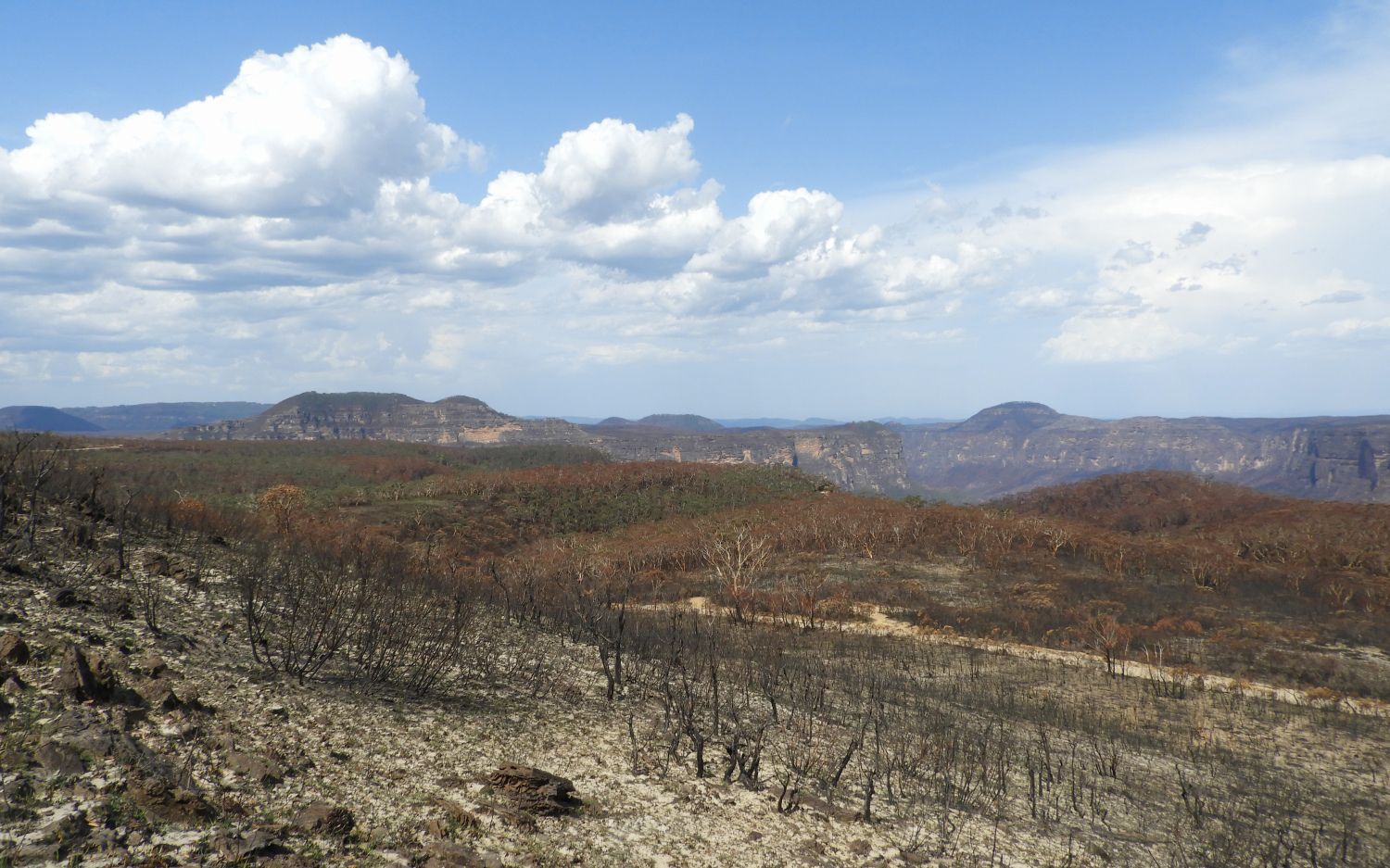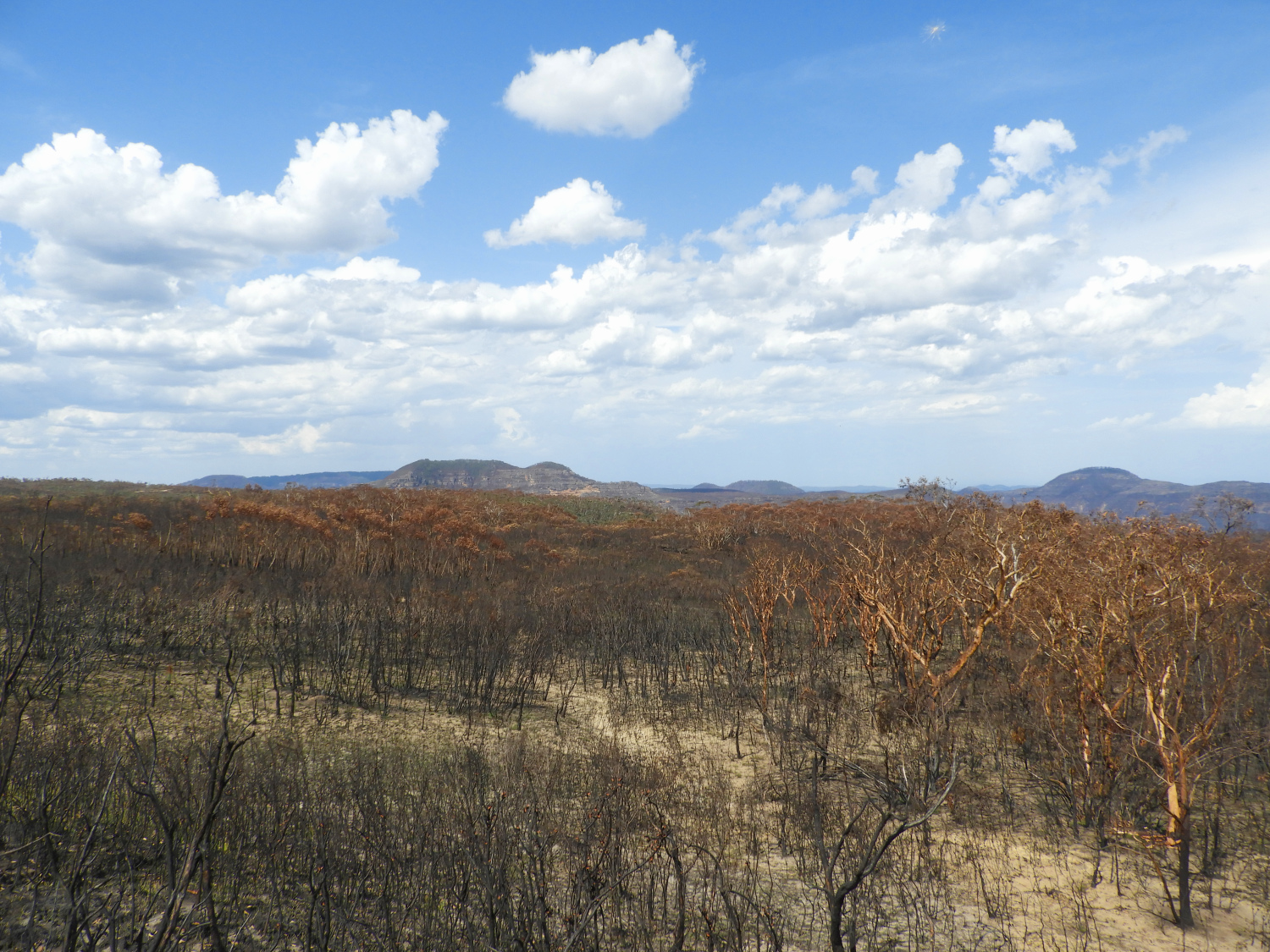This summer wild fires in Australia spread over the territory of more than 10 million hectares. And the fire season is still not finished. Just to compare, the areas of forest fires in 2019 in other regions of the world were 4 million hectares in Siberia, 1.8 million hectares in Canada, nearly 1 million hectares in South America.
What is the difference compared to other places?
Forest fires in other countries usually happen in remote areas far from big cities and infrastructure. Bushfires in Australia are much more dangerous: they take place in a relatively narrow stripe of rich green vegetation around the continent. And this stripe accommodates most of the population, agriculture and everything.
Snapshot of a map from NSW RURAL FIRE SERVICE
Shaded zone shows the burnt area close to Sydney (beeline distance Sydney-Newcastle is 120 km). Such bushfires are scattered along all the coastline
Some other informative maps can be accessed here
Highways run from Sydney in three major directions, and there is almost no settlements in between them. That makes it extremely difficult to put out a fire started in the middle of nowhere. A large bushfire coming close to roads and towns devastates territory and causes damage and losses.
Smoke hazes were almost everyday in Sydney for the last two months. Fire alarms in many places, including our institute, were turned off because of false positives. The harm of the smoke for health was estimated to be an equivalent of a pack of cigarettes daily.
Situation in Sydney, while the bushfires were still ~100-150 km away:
After the bushfires:
Smoke hazes were almost everyday in Sydney for the last two months. Fire alarms in many places, including our institute, were turned off because of false positives. The harm of the smoke for health was estimated to be an equivalent of a pack of cigarettes daily.
Situation in Sydney, while the bushfires were still ~100-150 km away:
sky is orange due to smoke clouds well above the city
This "fog" is smoke only
After the bushfires:
Is the nature of Australia different from other countries?
Australia is the country where plants adapted to being burnt for 60 millions of years. Such fire adaptations include thick bark to protect the trunk interiors from heat, high canopy (of gum trees), lignotubers (special "swellings" near the roots with buds) and epicormic buds under the bark. Fallen branches shoot sprouts immediately after the bushfires. Fire became necessary for seeding: high temperature is required to release seeds from their "boxes" or even to start blossom (one even may need to use a burner to get flowers in a greenhouse!).
Gum trees, one of the most common types of vegetation in Australia, promote bushfires. Fallen leaves and bark of these trees are extremely flammable, because they do not get rotten and wet easily, but become dry instead. Gum trees produce a lot of oils, which flash point temperature is as low as 49 °C. That is close to the temperatures during hot summer days. All together, it allows these trees to remove the undergrowth efficiently.
Temperature in bushfires reaches 1100°C. Wild forest fires must not occur more often, than once in 20 years: otherwise, forest will turn into savanna.
Temperature in bushfires reaches 1100°C. Wild forest fires must not occur more often, than once in 20 years: otherwise, forest will turn into savanna.
Sprouts from epicormic buds:
Sprouts from lignotubers:
Boxes with seeds opened only after a bushfire:
Therefore, forest vegetation in Australia is very different from other countries. Just to compare, for Russia they mention few examples of plants which seeds need an open bright spot (not even necessarily a former fire site) to grow, and no real fire adaptations exist. Forest succession (restoration after wild fires) leads to a different biocoenosis: plant species in a new forest are different from those in a former one.
So, when leaders of certain countries (Brazil) refuse from international assistance and help or certain officials (Russia) claim, that the forest fires are a natural and essential process, and it is "economically unfeasible" to fight against them, a lot of questions about the qualifications of these officials MUST appear. However, while the wild fires allow to hide illegal fire cuts, which is a problem both in Brazil and in Russia, such claims may go on.
What is the cause of bushfires?
Australians study causes of wild fires thoughtfully:
- Lightnings. Aforementioned oils can produce and immediate flash and flames. However, officials confirm only a relatively small percentage of cases to be caused by thunderstorms.
- Some other natural phenomena. For example, sparks from a falling stone (!). A commonly discussed broken glass, which may act as a lens to focus the sunlight and ignite the forest, is not supposed to be important.
- Idiots. A lot of fires start because of cigarette butts or campfires during fire season. If the fire was not knocked down properly, a wild fire starts. I have already called emergency service once to report a fire at the edge of the road, and I'm 100% sure that was caused by a cigarette butt.
- Jerks [that should be another rude word]. They report up to 13% of bush fires to be started by an arson. That could be teenagers without any respect to others or even firefighters looking for glory.
In the beginning of 2020 they increased penalties for throwing cigarette butts from cars up to $11000. Police asks to report about any such cases, because they possess a threat for all the people and property around.
Why did it go so bad this year?
Why did it go so bad this year?
As it was mentioned before, localised bushfires are some sort of a normal process. The area is controlled by rains and humidity across the forests. This year something went very wrong.
NSW is one of the most struck by bushfires states of Australia. 99% of its territory is also affected by a drought which lasts for last several years. Most of water reservoirs are less than 50% full, and this amount decreases over years. Water shortage results in water restrictions for private persons and businesses.
The amount of rainfalls is determined by planetary scale phenomena, like Indian Ocean Dipole.
Mean temperature in Australia has grown by 1.5°C during last 70 years.
Why is it so difficult to "just put it out" or prevent?
Mean temperature in Australia has grown by 1.5°C during last 70 years.
Why is it so difficult to "just put it out" or prevent?
- The drought restricts usage of fresh water.
- Sea water is extremely bad due to (1) corrosion of equipment (pumps) and (2) very negative impact of salt on the environment and agriculture.
- Fire season starts in early spring and lasts till the end of autumn. Therefore, any immediate firefighting procedures will just delay the bushfire.
- Controlled burning to reduce (locally) the amount of dry flammable material or local clearings are not effective. The winds with speed of 100 km/h and more can carry burning branches, leaves and pieces of bark to the distances up to 30 km
- Very dissected topography with lots of mountains and canyons all ways round does not allow to use firetrucks in many places. Only aviation can deal with bushfires, which is extremely expensive and poses additional risks. There was a crash just last week, and all the crew (US team) perished.
What do they actually do?
- Special fire retardant with fertilizers provide nutrients to let the vegetation to restore as fast as possible.
- They put the fire out only close to settlements, but they do it really promptly. Once they had to do it just near my house.
- Army helps to evacuate people and provide them support.
- Native animals of Australia get all the possible treatment (look here, it is VERY cute!) and food (also from helicopters). Of course, they accept international help
- Due to the shortage of water and pastures, the government has to shoot invasive species (pests), like feral camels. Now they discuss the fate of other species like feral horses. Local animals take the priority over all imported species.
- I would like to tell about the following mission of the fire services. In the very end of XX century scientists discovered a valley in Wollemi national park with pine trees, which were previously known only from Jurassic (200 million years old) fossils. A living fossil like coelacanth! And this particular mountains valley was resqued! Firemen here known their business and values perfectly!
- Local animals also have certain skills to resist the fires. Echidnas hide in small pits to stay while the area is in fire, also many animals can find a shed in burrows of wombats, which can be as long as 90 metres!
- Many large companies assist as well. For example, AirBnB provides free accommodations for people lost their houses.
Water for animals
What are the consequences right now?
- 33 humans perished and 2000 houses were lost in Australia in total. Her one may take a look through histories of the deceased. The losses could be higher, because:
- The situation is critical for many animals. 49 threatened species of animals lost more than 80% of their habitat (read more at the website of corresponding authority). In total, they estimate 1 billion of animals died.
- Catastrophic bushfires possess a major threat for rainforest (palm and fern tree) environments, because they are already restricted to small gullies and narrow valleys, therefore, it is very hard for them to restore.
- A political crisis comes out. A videos show firemen and victims of fires refuse to shake a hand of the prime minister or even demanding his resign in very straightforward expressions. Previously the PM refused to support the firefighters financially because (he said) they want to be in bushfires (!!!!). One other non-tolerated fail was to take a summer break on Hawaii during peak of the bushfires.
- Conservative politics of the government, negotiating the climate warming and the coal industry poses additional questions to the authorities
- The only positive effect so far is that the bushfires revealed an ancient (6600 years old!) part of a system of channels used by aboriginals to keep fish
Last few notes for optimists and jerks
It was pretty said to see some people saying:
- "ah, koalas are almost extinct just because this is just an evolutionary mistake, so it makes no sense to care about their population". Koalas became endangered only after 99% of the population was decimated for fur trade. Not they are an evolutionary mistake.
- "why should I care about their problems in their country?". A lot of migratory birds from Eurasia and North America come to Australia during winter. When they die, food chains outside Australia become destroyed. One may read about the results of a well-known Chinese experiment with sparrows.
- "A billion of animals died. Have they also counted every single mosquito? lol stupid scientists i dont care" - yes, and spiders. And do you what is the difference between you and spiders? They ARE important.
Soil get burnt till the rocks and a thin layer of sand atop it. Thick and dense grass is destroyed completely.
Secondary roads leading to tourist attractions are closed till official confirmation they are safe to proceed




















Комментариев нет:
Отправить комментарий